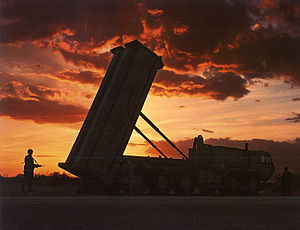
Image via Wikipedia
Secret U.S. cable detailed integrated missile defense plans for GulfLONDON -- A U.S. plan, disclosed by WikiLeaks on Nov. 28, called for a regional integrated air and missile defense network for the six Persian Gulf Arab states. The plan was outlined in a secret cable sent from the U.S. embassy in Bahrain in 2009."First, this involved integrating the U.S.'s own air and missile defense assets -- Navy Aegis, Army Patriots, etc.," the cable said. "Then we would offer to link each Gulf state into a Shared Early Warning Common Operating Picture, to the extent that each government was willing to participate. The U.S. would share the same picture with all, and each could add as much information as it liked, while keeping data it did not wish to share behind a secure firewall."The State Department memorandum reported on a meeting between the Air Force chief of U.S. Central Command and Gulf Cooperation Council military representatives. In the meeting, Centcom air chief Lt. Gen. Mike Hostage urged GCC leaders to agree to a comprehensive BMD network, known as RIAMD, that would protect against Iranian attacks."Lt. Gen. Hostage explained that, because of the threat posed by Iran to the region, his primary goal was to work on establishing RIAMD between the U.S. and the GCC states," the cable said.Officials have confirmed the U.S. plan. They said, however, the missile defense network has been hampered by infighting among GCC states and Saudi Arabia's refusal to cooperate in U.S.-sponsored regional efforts.So far, the U.S. military has been deploying both the PAC-3 as well as the Theater High Altitude Area Defense, or THAAD, systems in the Gulf. Both have been produced by the U.S. firm Lockheed Martin and were designed for low-tier and high-tier interception.

Hostage was quoted as saying that the United States has not determined a location for THAAD. But he said the system was scheduled for deployment in 2010 in a GCC state."Gen. Hostage replied that the location was not yet certain, but yes, THAAD would be deployed within a year, and would prove to be a very capable mid-course intercept system," the cable said.

